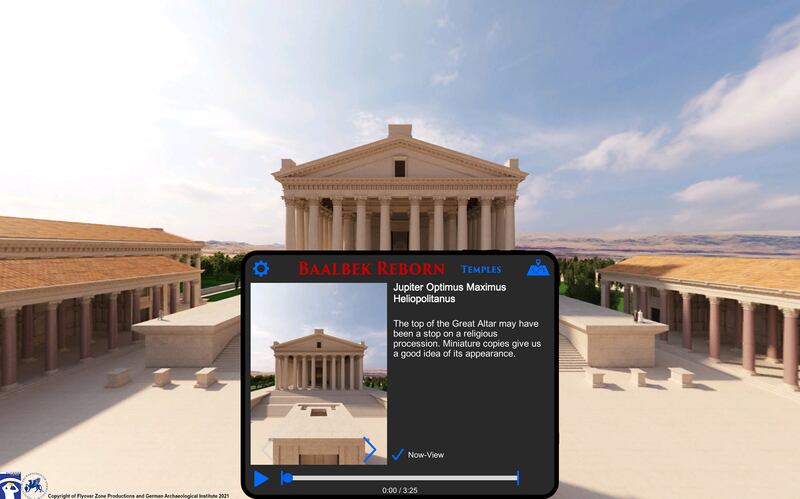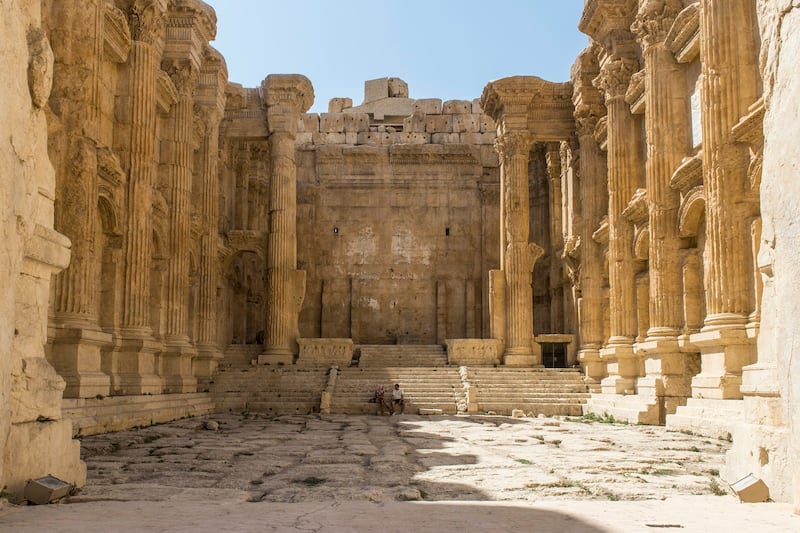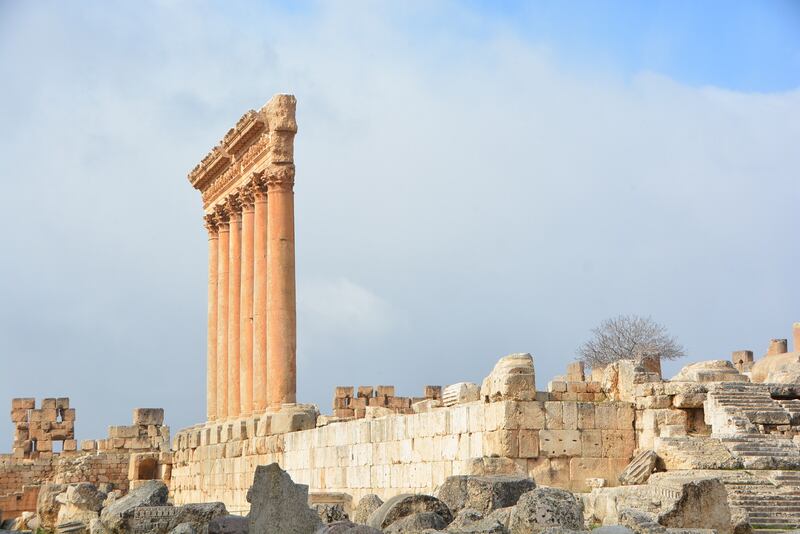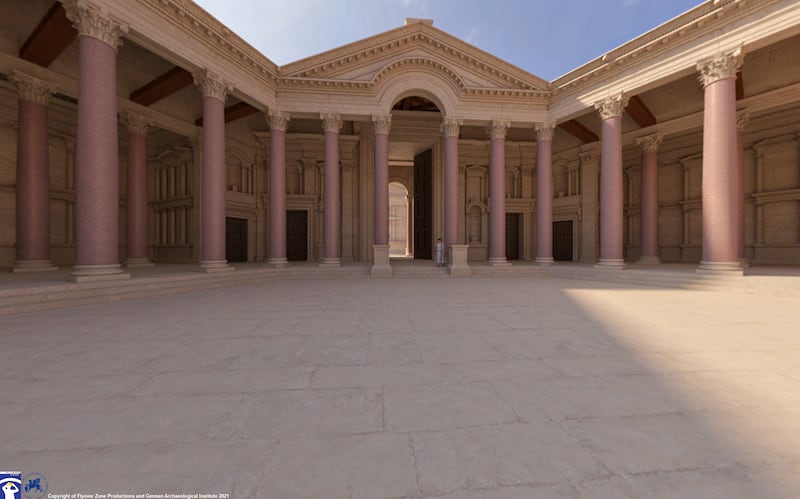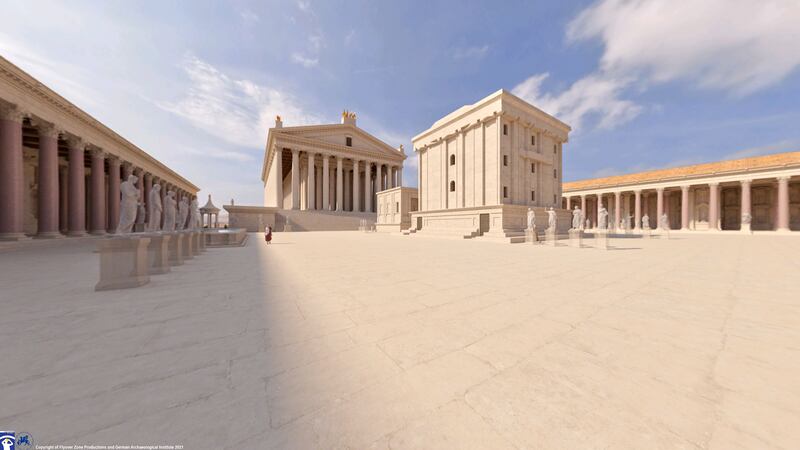For centuries, the Roman Heliopolis of Baalbek in Lebanon has captivated scholars, emperors and adventurers alike, who marvel at the architectural feat and spiritual significance it embodies.
Though it lies in ruins, with the help of modern technology, people can now travel back in time to see, what was in its heyday, the largest sanctuary of ancient Rome.
The virtual tour app, titled Baalbek Reborn: Temples, was put together by the Lebanese Directorate General of Antiquities, the German Archaeological Institute (DAI) and Flyover Zone – a US company that specialises in virtual tours of archaeological sites. Two years in the making, the app was launched this month.
#BaalbekReborn is free and available on the Apple Store, Google Play, and https://t.co/X3zma31qq8. Download and start exploring today! 🌍🏛🏺 pic.twitter.com/NSneQ9TYVH
— Flyover Zone | virtual tourism (@flyover_zone) March 31, 2021
"No list of the world's most important tourist destinations would be complete without Baalbek, so you can well understand why we jumped at the opportunity to recreate Baalbek in the Roman period," Flyover Zone founder Bernard Frischer tells The National.
"It was the site of one of the most important oracles of the ancient world, dedicated to Heliopolitan Zeus [later know as Jupiter], and it became seriously influential," he says. "Emperors consulted it. Everyone wanted to know whether they should get married, take a trip or start a business, start a war, and they all asked the oracle."
The Roman complex sits on older Hellenistic foundations, and deeper Neolithic ones dating back 10,000 years, as the site lies at the wellspring of the Bekaa Valley’s two major rivers, making it an epicentre of life and fertility. The location began in worship to Baal, the Semitic lord of the gods and precursor to Helios, Zeus and Jupiter.
The Roman temples were completed between the second and third century and are some of the largest, best-preserved examples of Roman architecture. The ruins were first excavated at the end of the 19th century at the request of Emperor Wilhelm II of Germany. A French team continued the effort in the 1930s. Since 1998, the DAI has been uncovering more of Heliopolis's secrets.
The free app – made possible by the patronage of retired Kuwaiti businessman Bassam Alghanim – is the first in a series of virtual tours presenting this Unesco World Heritage Site, guiding viewers through the complex as it looks today and as it would have looked in the year 215. It can be downloaded on smartphones, tablets, computers and VR headsets.
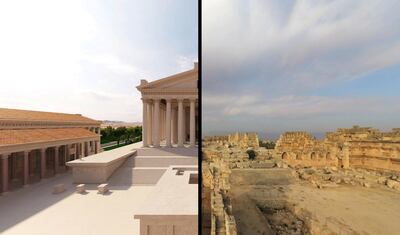
The tour allows viewers to see areas they cannot access in person, as well as parts of temples lost to time. The Temple of Jupiter, for example, was almost entirely demolished by earthquakes and pillaged for stone under the rule of Roman Emperors Theodosius and Justinian.
"We're excited to share our results to a much wider audience, inviting everyone to see Baalbek and what it used to look like. If you think Rome was great, you have yet to see Baalbek," Henning Burwitz, a DAI architect and archaeologist who worked on the ruins for more than a decade, tells The National. "Today, only six columns [of the Temple of Jupiter] are preserved. These are the biggest preserved, at 22.5 metres in height and more than two metres in diameter.
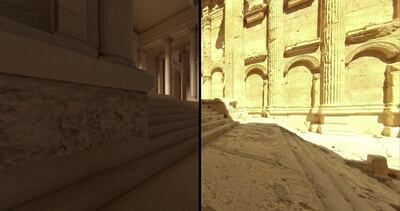
"They are resting on the biggest stones ever quarried by mankind, and we can see – in the reconstruction – the full extent of this marvellous building," he says. "The columns have been undergoing restoration since 2017 … giving us the chance to take marvellous photos from this special perspective at the top [of the scaffolding]."
The Temple of Jupiter, the Temple of Bacchus, the Temple of Venus and the Temple of the Muses have all been captured in 8K resolution 360° panoramas, as well as through shots by drones, and have been brought back to life through 3D digital modelling.
Though the idea of virtual reality isn't new, it's only in the past few years that it has entered mainstream use and has been explored in innovative ways. For archaeology and history, it's a game-changer that offers an immersive and tangible experience for a subject sometimes viewed as dry when presented through textbooks.
The tour offers 38 stops to explore, accompanied by two hours of commentary from DAI experts, and is available in Arabic, French, English and German. Viewers can choose to follow their own path or go on a 40-minute guided tour.
"My idea, right from the 1980s, was to use the same software that an architect might use today to design a future building, and reverse engineer it for old buildings that once existed, that we have the foundations and partial structures for," Frischer says. "We use computer-aided design software like AutoCAD, 3D Studio Max, Maya and Blender for 3D modelling, and we use traditional architectural blueprints, which we have from DAI, updated by their work over the last 20 years.
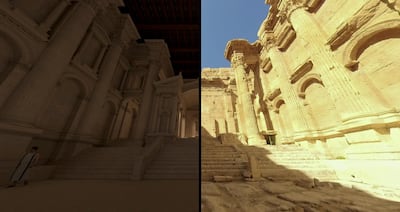
"With a digital model you can move around and at a scale of 1:1, whereas physical models are tiny at 1:100. We can go inside the buildings, between the pathways and it's photorealistic," Frischer says. "Physical models are made from plaster, but with virtual reality you can texture with the actual materials the surfaces were made of. We got a sample of rose granite from Egypt, just like those used in Baalbek, and put that on to our geometric model for the columns."
The project was initially meant to launch in August 2020, but was delayed owing to the huge explosion that devastated Beirut. In light of the ongoing economic crisis in Lebanon, civil unrest and the pandemic, the DGA hopes the app will attract new interest in the country and revitalise its tourism sector.
Frischer says the role of virtual tourism is not to replace regular tourism, but to augment it and reach potential visitors. Before Lebanon’s 1975-1990 civil war, Baalbek was on many people’s bucket list of places to see, but has since been perceived as unsafe to visit and subsequently forgotten.
“The whole point of what we do is to raise awareness about the great cultural heritage sites around the world and make it easier for people to virtually visit places they may not know existed, to stimulate this sense of adventure and curiosity to actually go there,” Frischer says. “If you put it on your cell phone, you can take it with you when you’re on the site or it can be used in schools, as virtual field trips.”
The DGA, in partnership with Arcenciel, a Lebanese non-profit helping marginalised communities, has also taken the opportunity to launch a series of crowdfunded training courses on heritage crafts for 100 young people. Promoted through Flyover Zone, the courses help to support Beirut's restoration of historic houses affected by last year's port blast.
The tour app can be downloaded at flyoverzone.org
